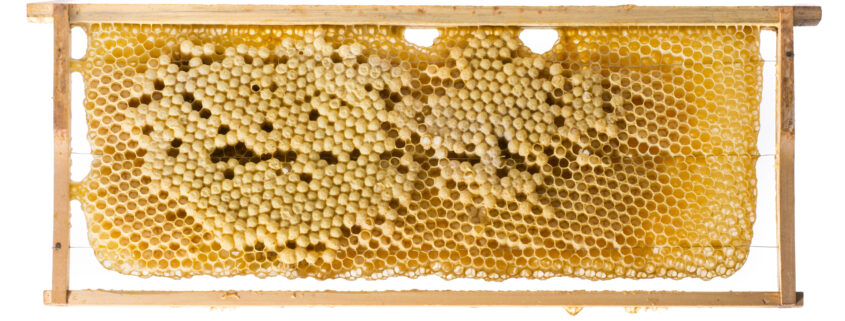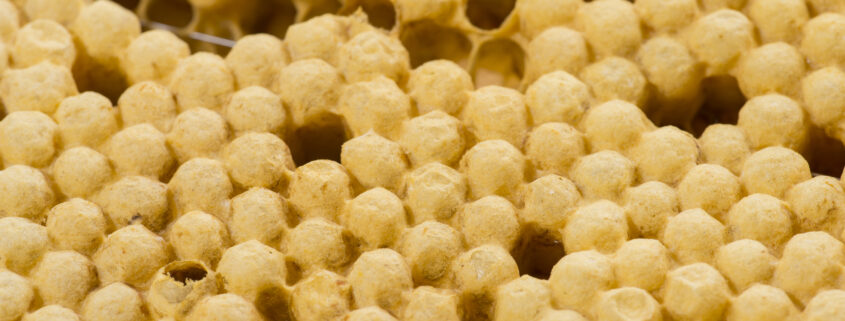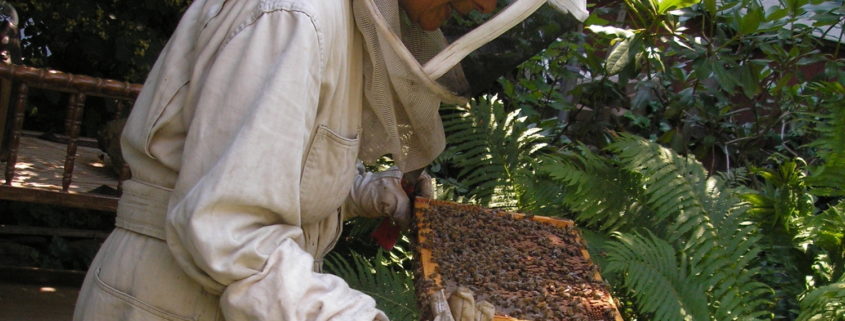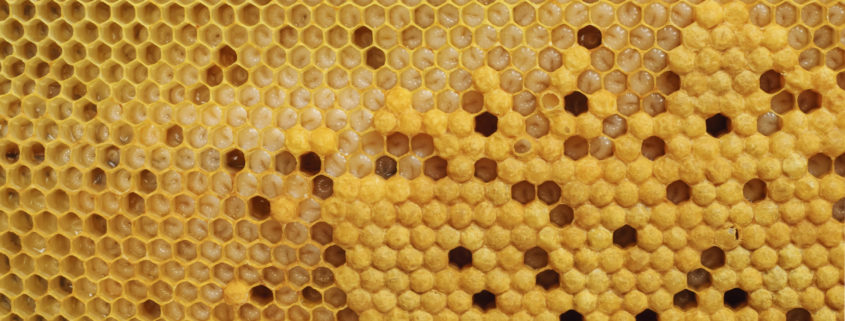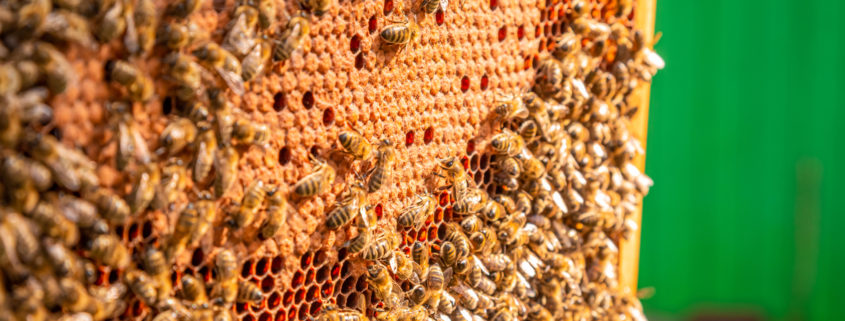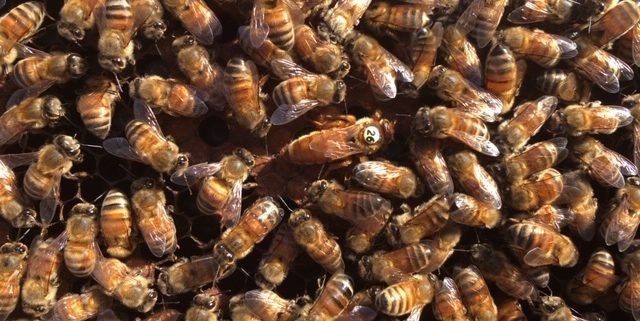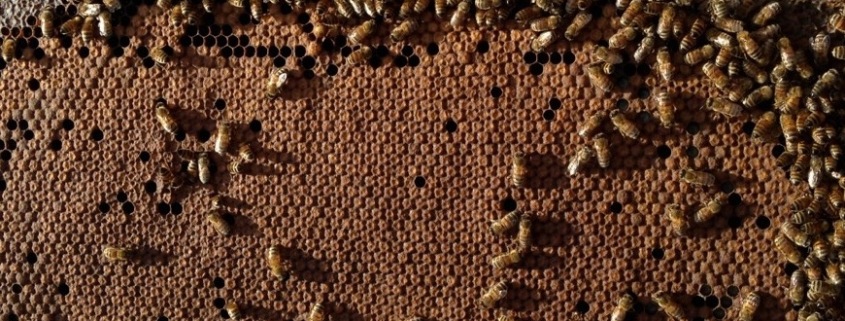What Is a Drone Laying Queen?
Sometimes you may inspect a hive and be caught off guard by an excess of drone brood. Why is your queen laying so many drones? If you’ve stumbled on a drone-laying queen, you need to be concerned. Drones are very important to a hive and play a vital role. However, finding several layers of drone brood in your hive is neither normal nor healthy for a colony.
A healthy queen will lay a relatively small percentage of (male) drone honeybees. This happens mostly during the spring and swarm seasons—but, as a rule, not year-round.
Drone brood is unfertilized brood. Queen bees lay both fertilized eggs (female) and unfertilized eggs (male). In order for eggs to develop into regular female worker bees, they must be fertilized with sperm. When eggs are left unfertilized, they develop into drones (male). This balancing act should be a controlled and well-planned process to ensure that drones do not overrun the hive. After all, drones do not produce honey nor defend the hive.
It’s not difficult to tell if there’s a drone-laying queen in one of your hives. When a drone layer is present, all the eggs will be left unfertilized, creating far more drone brood than normal. The difference between worker brood and drone brood is easy to observe. Drone brood appears bumpy and lumpy, whereas female worker brood appears flat. This bumpy, dome-like appearance takes shape as large male drone bees grow and extend past the cell. A hive with too many drones is a liability. Beehives need a balance of worker and drone honeybees to be successful and thrive. Worker bees keep the colony running and sustainable, and drones do not.
Drone-laying queens are often caused by one of two reasons: either the queen has been poorly mated, or the old queen has run out of sperm. The core cause in both cases is that the queen’s eggs are not being fertilized.
At Wildflower Meadows, we have a responsibility to ensure the queens we sell are never poorly mated, reducing the likelihood of drone layers. We work to prevent this by allowing an extra week of testing before any queen is selected for sale. By giving the queens this additional time to prove themselves, we can assess the quality of brood laying, identifying any drone layers in the process.
Luckily, remedying a drone-laying queen is not difficult—although it’s not a happy ending for the queen. Even if the queen is young, there’s no chance she will successfully mate again in the future, meaning she must be removed immediately. Requeening the hive may give the bees a second chance, provided there are enough workers left in the colony to justify investing in a new queen.
If the colony is too small or weak, you may have a lost cause. You may just need to fold up the hive, merge the bees and brood into an existing healthy hive, and restart a new colony from scratch. Sometimes a hive as a whole can’t be saved, but the bees themselves can be salvaged.

